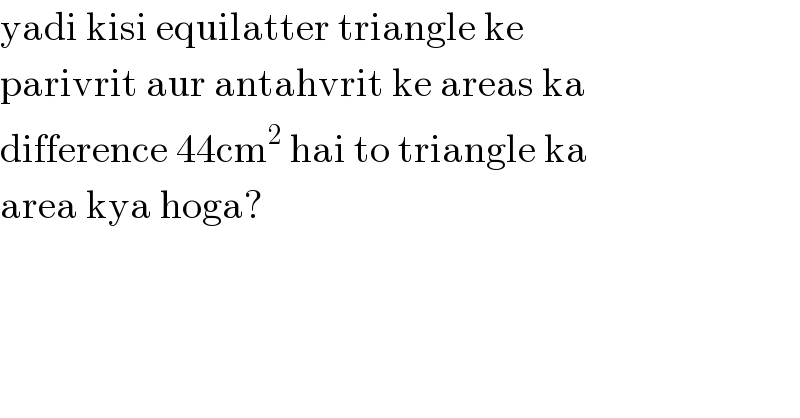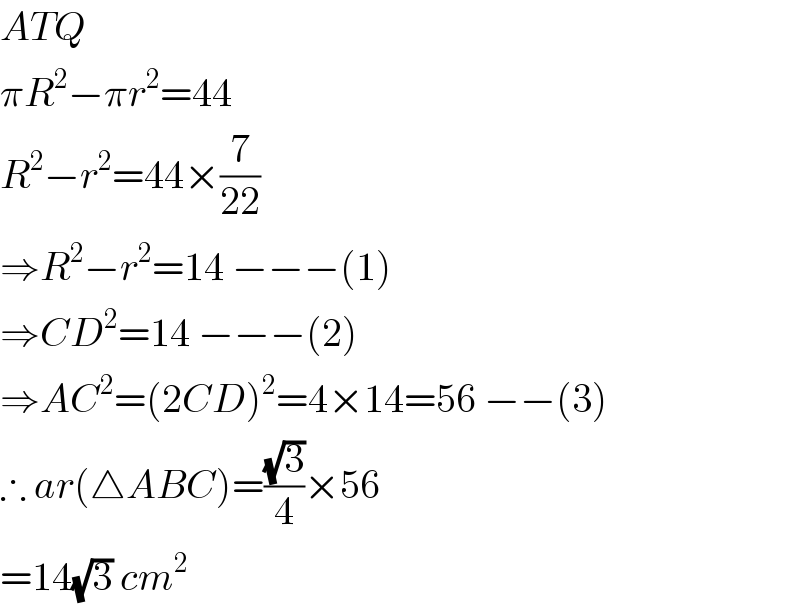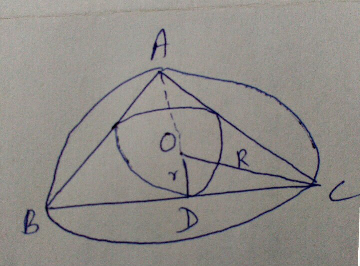
Question Number 25245 by adityapratap2585@gmail.com last updated on 06/Dec/17

$$\mathrm{yadi}\:\mathrm{kisi}\:\mathrm{equilatter}\:\mathrm{triangle}\:\mathrm{ke}\: \\ $$$$\mathrm{parivrit}\:\mathrm{aur}\:\mathrm{antahvrit}\:\mathrm{ke}\:\mathrm{areas}\:\mathrm{ka}\: \\ $$$$\mathrm{difference}\:\mathrm{44cm}^{\mathrm{2}} \:\mathrm{hai}\:\mathrm{to}\:\mathrm{triangle}\:\mathrm{ka}\: \\ $$$$\mathrm{area}\:\mathrm{kya}\:\mathrm{hoga}? \\ $$
Answered by $@ty@m last updated on 07/Dec/17

$${ATQ} \\ $$$$\pi{R}^{\mathrm{2}} −\pi{r}^{\mathrm{2}} =\mathrm{44} \\ $$$${R}^{\mathrm{2}} −{r}^{\mathrm{2}} =\mathrm{44}×\frac{\mathrm{7}}{\mathrm{22}} \\ $$$$\Rightarrow{R}^{\mathrm{2}} −{r}^{\mathrm{2}} =\mathrm{14}\:−−−\left(\mathrm{1}\right) \\ $$$$\Rightarrow{CD}^{\mathrm{2}} =\mathrm{14}\:−−−\left(\mathrm{2}\right) \\ $$$$\Rightarrow{AC}^{\mathrm{2}} =\left(\mathrm{2}{CD}\right)^{\mathrm{2}} =\mathrm{4}×\mathrm{14}=\mathrm{56}\:−−\left(\mathrm{3}\right) \\ $$$$\therefore\:{ar}\left(\bigtriangleup{ABC}\right)=\frac{\sqrt{\mathrm{3}}}{\mathrm{4}}×\mathrm{56} \\ $$$$=\mathrm{14}\sqrt{\mathrm{3}}\:{cm}^{\mathrm{2}} \\ $$
Answered by $@ty@m last updated on 07/Dec/17

